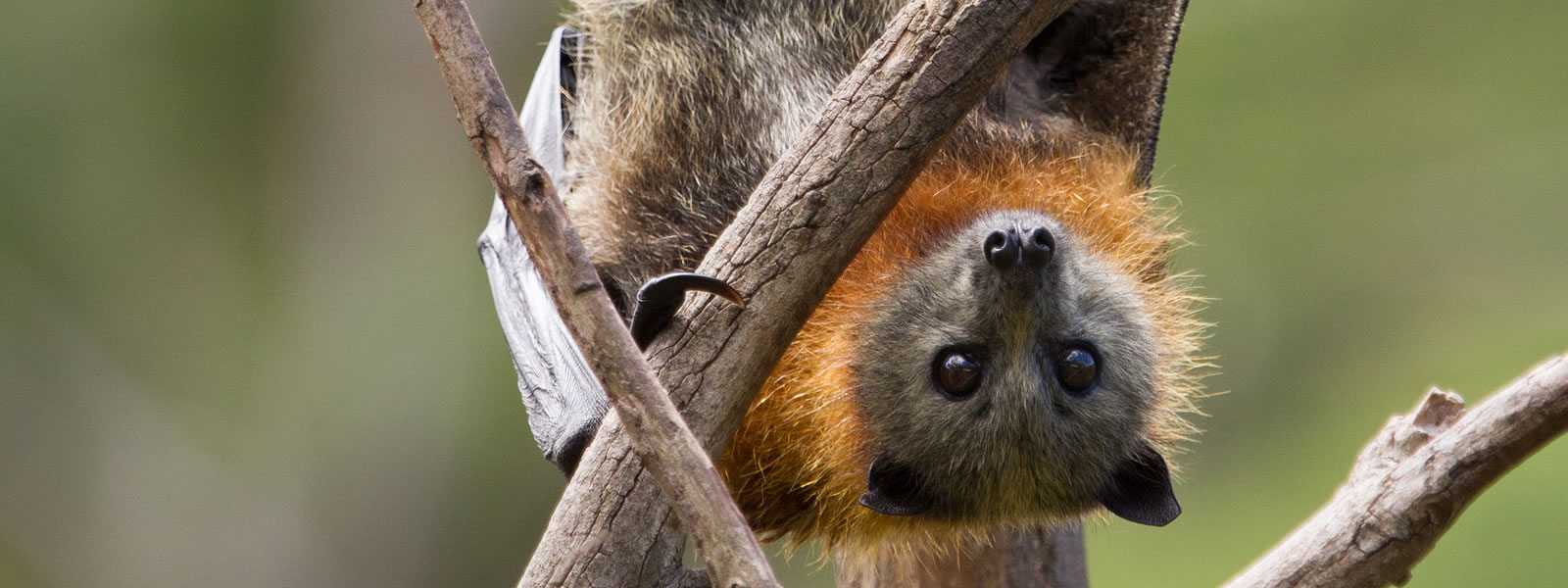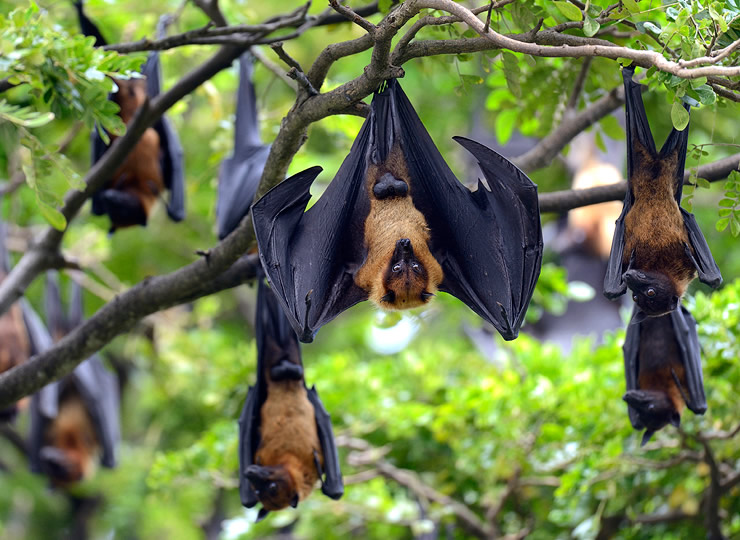Samoan Flying Fox
Pteropus samoensis

Across the many islands in the South Pacific and Indian Ocean, flying foxes are critical for seed dispersal.
Range map of the Samoan flying fox

Flying foxes can weigh several pounds and may have a wingspan of up to 4 feet (1.22 meters). Photo credit: iStock/Getty Images Plus
Around the world, there are 65 species of flying foxes — also known as fruit bats. Some of these species are among the largest-known groups of bats alive today, and about half are threatened by invasive species, hunting, and habitat loss.
Flying foxes live in trees and eat fruit. They often swallow the fruit seeds and defecate them in other places, which helps spread the seeds to new locations.
Flying foxes are a group of fruit bats with 65 species around the world. Some of these species are among the largest bats alive today. About half are threatened by hunting, habitat loss, and invasive species. One example is the Samoan flying fox, which lives on the South Pacific islands of Fiji, Samoa, and American Samoa.